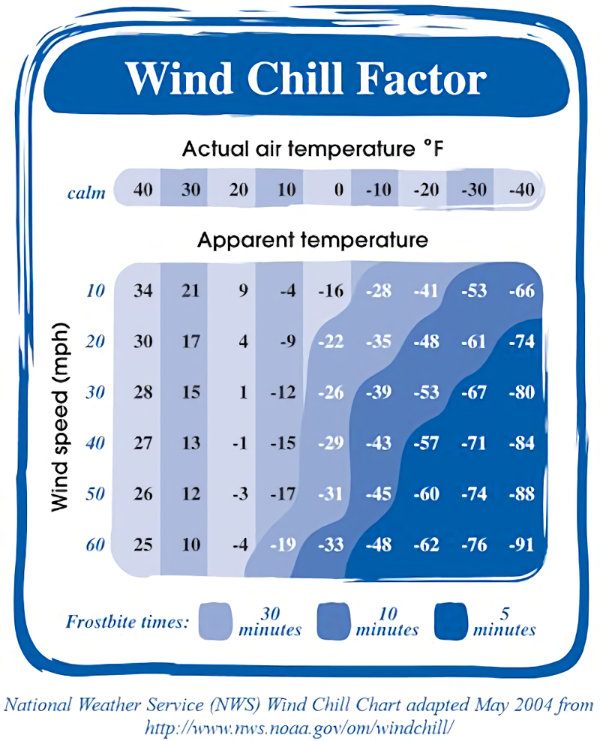Cold Stress
During construction, workers may be required to work in cold environments, and sometimes for extended periods of time.
When the body is unable to warm itself, cold-related stress may occur. This may include tissue damage and possibly death. It's important to take the following precautions when working in the cold:
- Plan work activities so that outside work is conducted during the warmer parts of the day or rescheduled for days that are predicted to be warmer.
- When possible, move work indoors or to an area that is protected from the wind/precipitation.
- Wear layers of clothing that are windproof and waterproof. Consider keeping additional clothing with you and changing into dry clothing as soon as possible after work clothing becomes wet.
- Take frequent rest breaks in warm, sheltered spaces.
- Drink plenty of fluids to prevent dehydration and limit the intake of caffeinated beverages.
- Know the signs and symptoms of cold stress (pain and numbness in extremities, excessive fatigue, severe uncontrollable shivering, drowsiness, irritability) and use the buddy system to monitor one another for these signs/symptoms.
- If someone shows signs of cold stress (frostbite or hypothermia), request immediate medical attention, move the individual to a warmer area in a sheltered space, remove cold or wet clothing, provide warm fluids, and monitor the person.
Knowledge Check Choose the best answer for the question.
3-13. What precaution should you take when working in the cold?
You forgot to answer the question!

